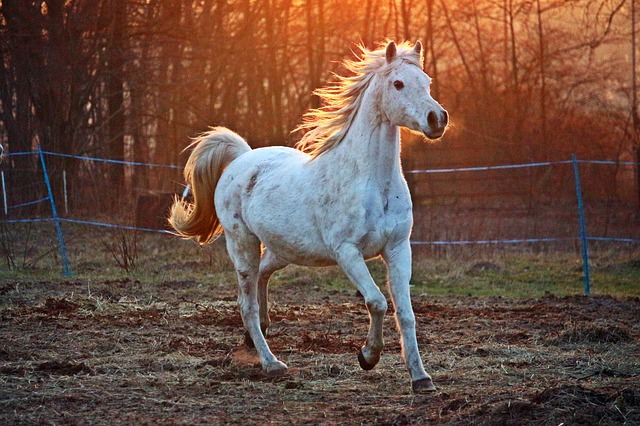Tuesdays with Tony
Ahh, Florida. The rest of the world is sure it’s all sun, surf, and sand. They’ve got 2 out 3 right, and according to Meatloaf that ain’t bad. Where am I going with this? To the sand. For reasons I don’t understand, horses feel it’s appropriate to eat sand. This can, obviously, lead to problems. This week, we’re going to talk about those problems. More importantly, we’re going to talk about how to be smarter than your horse so that you can avoid these problems. I have faith you humans can do it. I’m not asking you to be smarter than a cat. That would be impossible.
How do I know they have sand?
Many of you have likely heard of the Ziploc bag test. I’m sure this is a use Ziploc did not envision for their handy plastic bags. This test involves grabbing a few fecal balls from a fresh, clean pile, adding water, sealing the bag (very, very important step), and shaking. Let the bag sit for a few minutes, and see if there’s sand in the bottom. There will be sand. After all, we do live in Florida. The question is how much sand is there? If there’s ¼ sand or less to ¾ poop in your sand-to-poop ratio, congratulations your horse is moving sand out of the gut. That word ‘moving’ is important. That’s the limitation of this test. It is moderately useful, but it only tells us that sand is moving out of the gut. You see, horses are sneaky. They also like to have a gut full of sand that’s just sitting there doing nothing! That sand won’t show up on the Ziploc test.
Behold! The awesomeness of x-rays and ultrasound! If my Docs have a sand suspicion, but no sand on the baggie test, they pull out the big guns. They will start with the ultrasound. My Docs will put an ultrasound probe right on the middle of the bottom of the abdomen. If there’s sand, they will see a colon with no ridges. Those ridges are what they call sacculations of the large colon. These sacculations are what allow the colon to expand with gas and food, then shrink down as it empties. Sand, however, fills all that up. Sometimes, it can be a little tough to decide on ultrasound thanks to gas. Ultrasound can’t see through gas, so if your horse has a lot of it, and horses often do have a lot of gas, the Docs will switch to x-ray. They shoot an x-ray through the bottom of the abdomen, and get an image that looks like this:

Getting Rid of Sand
Great, you’ve now identified that your horse has sand in the belly. How do you get rid of it? If there’s lots of it, my Docs will tube your horse with a combination of psyllium (basically Metamucil), Epsom salts, and mineral oil. The psyllium and Epsom salts work to grab the sand, pick it up, and move it out of the gi tract. The mineral oil works to protect the walls of the GI tract from all that abrasion as the sand moves. You can just imagine how abrasive that can be…..go ahead, imagine. Usually one treatment clears the sand, but sometimes it takes more than one. Rarely, my Docs have to bring one of these guys into the clinic for IV fluids along with the Epsom salts, and psyllium. I will say it is very impressive when they start passing sand. There’s nothing like sand, psyllium, Espom salt diarrhea to really make a mess out of stall!

Even better, keep sand out
“On ounce of prevention is better than a pound of cure” was never more true than sand and horses. The number one key is hay. Yep, hay, and lots of it. As far as horses are concerned, this is the key to preventing lots of things. For sand, hay acts like a vacuum. As all that roughage travels through the GI tract, it sucks up the sand, and sends it out the back end safely. If you’ve paid any attention to my blogs, or the awesome seminars my minions have, you know that the minimum amount of hay a horse should eat is 1-2% of their body weight daily. That’s 12-24 pounds for the average horse every day. Live on a sand hill? Stay closer to that 24 pound number!
Minimizing the amount of sand that goes in will also help. Feeding hay from slow feed hay nets, or off clean rubber mats can help reduce sand consumption. Keeping your fields from being overgrazed can also help. When horses are seeking out the small amounts of grass in an otherwise sandy field, they will eat way, way more sand. Bringing horses into a stall for grain meals can also reduce the amount of time they spend snuffling through sand to get that very last pellet they dropped. (Total shameless plug for our ‘How To Handle Your S#!t Seminar’ this Thursday at the Clinic, to help you keep those fields in good shape.)
With a little strategy, you can avoid those pesky unscheduled calls with my Docs for a sand colic. And I know how much you humans enjoy a good unscheduled visit. Think your horse might have sand? Call the Clinic to schedule an x-ray or ultrasound to see what’s inside!
Now be a good human and subscribe to my blog. That way you can get all my awesomeness a day before everyone else.
Until next week,
~ Tony
Tuesdays with Tony is the official blog of Tony the Clinic Cat at Springhill Equine Veterinary Clinic in Newberry, Florida. If you liked this blog, please subscribe below, and share it with your friends on social media! For more information, please call us at (352) 472-1620, visit our website at SpringhillEquine.com, or follow us on Facebook!

You must be logged in to post a comment.